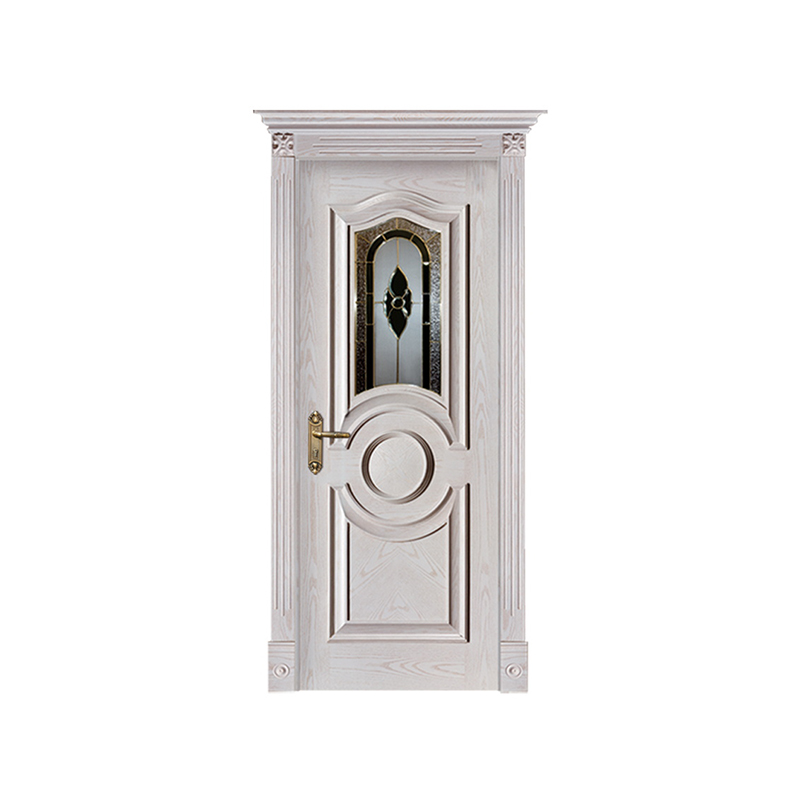We provide quality products and services to customers from all over the world.
The Durability and Energy Efficiency of Solid Core Front Entry Doors
A home's entry door serves as both its impression and line of defense, making the choice between different door types more than just an aesthetic decision. Among the various options available today, solid core front entry doors have emerged as a preferred solution for homeowners seeking durability, security, and energy efficiency in equal measure. Unlike their hollow-core counterparts or even some modern solid interior doors, these entryway workhorses are built to withstand years of use while keeping energy costs in check.

The construction of solid core entrance door systems explains their growing popularity. These doors feature a dense inner core typically made of engineered wood or composite materials, sandwiched between quality veneers or solid wood faces. This construction gives them a substantial weight and density that surpasses standard modern solid interior doors, translating to better impact resistance and longevity. Where a typical interior door might last a decade or two, a well-maintained solid core front entry door can protect a home for generations, resisting the warping and weathering that plagues lesser materials.
Energy performance represents one of compelling advantages of these doors. The thermal mass of a solid core entrance door creates a natural barrier against heat transfer, helping maintain consistent indoor temperatures regardless of outdoor conditions. This efficiency goes beyond what modern solid interior doors can offer, as entry doors must contend with direct exposure to sunlight, rain, and temperature extremes. Homeowners notice the difference in reduced HVAC strain and lower utility bills, particularly in regions with harsh seasonal changes.
Security enhancements come as another benefit of this door type. The substantial construction of solid core front entry doors makes them inherently more resistant to forced entry than hollow or lightweight alternatives. While no door is completely impenetrable, the time and effort required to breach a quality solid core entrance door often proves sufficient deterrent against casual break-in attempts. This security advantage extends beyond what standard modern solid interior doors provide, as entry doors require this extra level of protection.
Maintenance requirements for these doors have decreased significantly with advances in materials technology. Today's solid core front entry doors feature finishes and sealants that protect against moisture intrusion and UV damage far better than products from previous decades. This represents a notable improvement over some traditional modern solid interior doors, which may require more frequent refinishing. The exterior-grade construction of proper entry doors ensures they maintain their appearance and function with only basic care—occasional cleaning and lubrication of hardware typically suffices.
Design flexibility has kept pace with performance in these products. Manufacturers now offer solid core entrance door options that complement any architectural style, from classic paneled designs to sleek, contemporary profiles. This variety means homeowners no longer must choose between the durability of a solid core front entry door and their desired aesthetic. The finishes available rival those found on high-end modern solid interior doors, with stain and paint options that maintain their vibrancy despite constant exposure to the elements.
Installation considerations for these doors differ somewhat from typical modern solid interior doors. The weight and weatherproofing requirements of solid core front entry doors demand precise framing and professional-grade sealing to achieve their full potential. Proper threshold integration and weather stripping installation become critical factors that don't apply to interior applications. When correctly installed, these doors form an airtight seal that enhances both their durability and energy performance.
The long-term value proposition of solid core entrance door systems becomes apparent when considering replacement cycles. Where cheaper exterior doors might need replacement every 5-10 years, a quality solid core front entry door can last decades with proper care. This longevity, combined with ongoing energy savings, often makes them a wiser investment than initially less expensive alternatives. The difference in lifespan compared to standard modern solid interior doors is particularly striking, as interior doors typically face less demanding conditions.
Environmental considerations further bolster the case for these doors. The insulation properties of solid core front entry doors reduce energy consumption year-round, while their durability means less frequent manufacturing and disposal of replacement units. Many manufacturers now use sustainable materials in their cores and veneers, offering eco-conscious homeowners peace of mind that complements the energy efficiency benefits.
For homeowners comparing options, the choice between a basic exterior door and a true solid core entrance door comes down to priorities. Those valuing short-term savings might opt for lighter constructions, while those focused on long-term performance, security, and efficiency will find solid core front entry doors deliver outstanding results. The gap between these specialized exterior doors and standard modern solid interior doors in terms of construction quality and performance highlights why exterior applications demand purpose-built solutions.
Interested in cooperation or have questions?
![]() +86-13857003056
+86-13857003056
![]() No. 27 Lianhuashan Avenue, Jiangshan Economic Development, Jiangshan, Quzhou, Zhejiang, China
No. 27 Lianhuashan Avenue, Jiangshan Economic Development, Jiangshan, Quzhou, Zhejiang, China

 English
English русский
русский Français
Français Español
Español عربى
عربى
